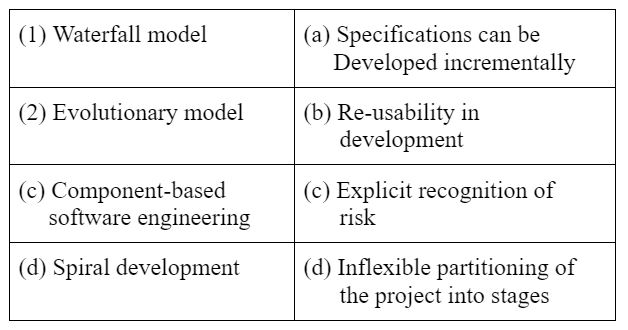Types-of-Models
Question 1 |
Match the following:


(1)-(a), (2)-(b), (3)-(c), (4)-(d) | |
(1)-(d), (2)-(a), (3)-(b), (4)-(c) | |
(1)-(d), (2)-(b), (3)-(a), (4)-(c) | |
(1)-(c), (2)-(a), (3)-(b), (4)-(d) |
Question 1 Explanation:
Waterfall model → Inflexible partitioning of the project into stages
Evolutionary model → Specifications can be Developed incrementally
Component-based software engineering → Re-usability in development
Spiral development → Explicit recognition of risk
Evolutionary model → Specifications can be Developed incrementally
Component-based software engineering → Re-usability in development
Spiral development → Explicit recognition of risk
Question 2 |
The model in which the requirements are implemented by its category is
Evolutionary Development Model
| |
Waterfall model
| |
Prototyping Model
| |
Iterative Enhancement Model |
There are 2 questions to complete.
